A Windows PE based Rescue Disk extends Windows OS recovery functionality, adding free and open-source tools you can use to recover, restore, and analyze your ailing Windows 11/10 installation. In this post, we will show you how to make a Windows PE rescue disk.
How to create a Windows PE Rescue Disk
You will need two items to successfully make a Windows PE Rescue Disk:
- The Win10XPE project.
- Windows 11 or Windows 10 ISO file. You can directly download the ISO using Edge or Chrome browser.
You should know that Win10XPE supports Windows 10 or Windows 11 original x64 or x86 ISO sources, and it is available for download here.
Once you have these items downloaded, you can proceed as follows to make a Windows PE rescue disk.
Extract or mount your Windows 11/10 ISO and the compressed Win10XPE 7Z file using 7-Zip, then run the Win10XPE.exe file.
Navigate to the location of your Windows 10 installation files. Click Select the Windows Source Folder in the main Win10XPE menu.
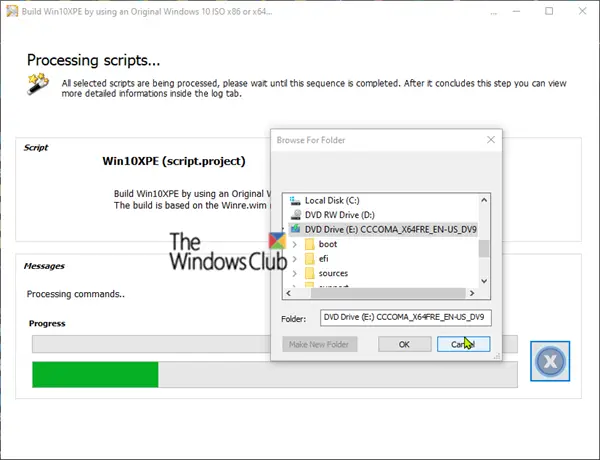
Once the Windows installation files have been loaded into the Win10XPE environment, you can now proceed to customize the tools you want to include with the Windows PE disk.
In the left-hand menu, click the + sign next to Apps to collapse that section.
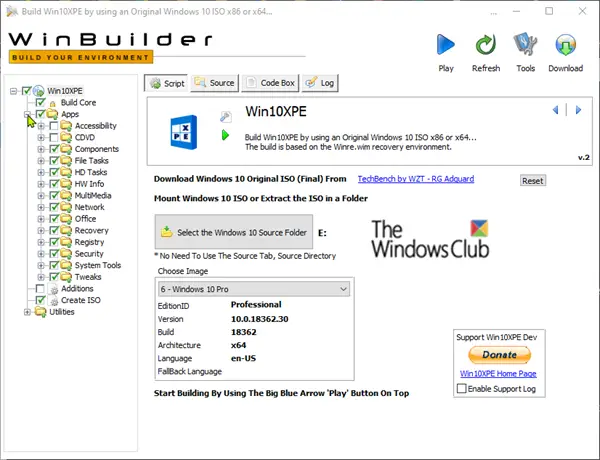
You can now browse the sub-categories to select which tools you want to inject into the Windows PE rescue disk. Win10XPE will use a default configuration. To inject the tools into your environment, check the box next to each option.
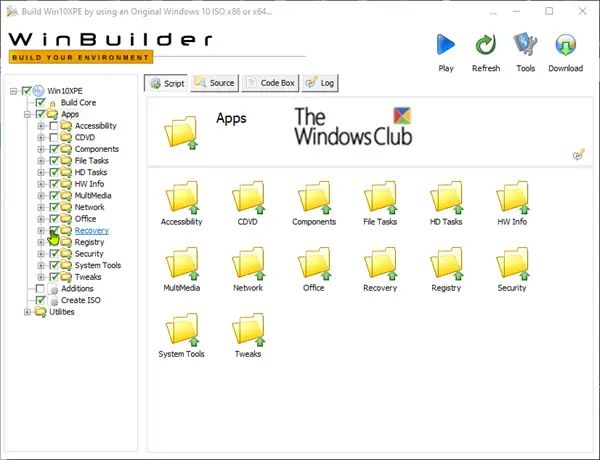
Click on Build Core in the left-hand side menu to modify the configuration. This sets various settings, like keyboard layout and locale, for your Windows PE build.
The default Build Core menu configuration works for most users. If you want to use a wireless network connection in Windows PE, click the Main Interface tab and check Network Drivers, Network Additions and Microsoft .NETFx4 options.
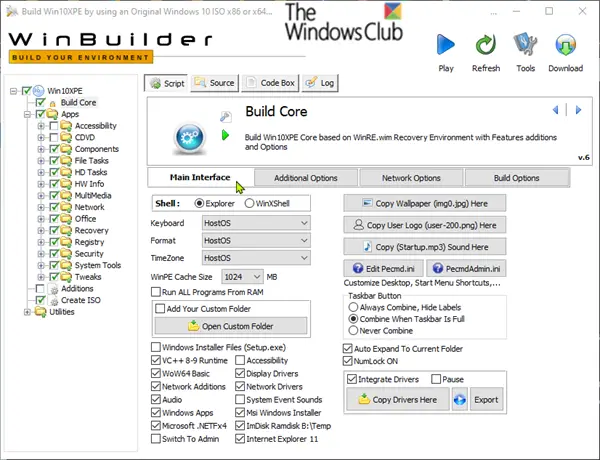
With PortableApps, or additional configuration files, you can also add custom files to your Windows PE environment.
To set Win10XPE to add these, check the Add Your Custom Folder option, then click the Open Custom Folder button to copy your files to that location.
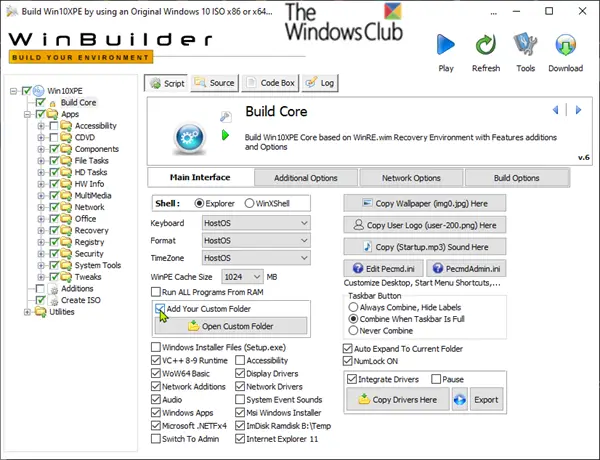
Lastly, most users may not need to configure the Utilities menu. However, if you do need to configure this section, for instance, to enable the .NET Framework 2.0-3.5 feature, click on the + sign next to Utilities in the left-hand side menu, to collapse this section.
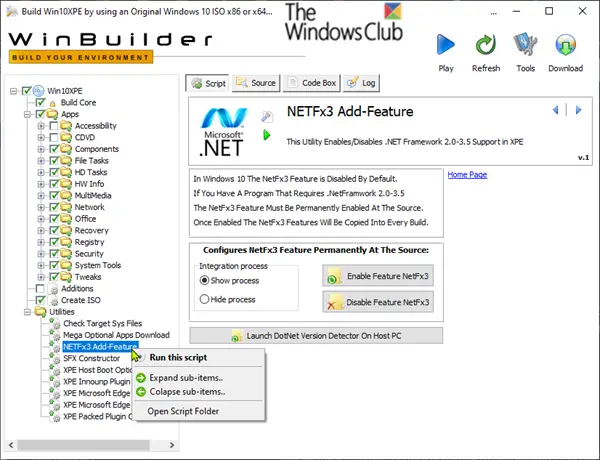
Once you have completed your Win10XPE configuration and your files are in place, you can proceed to build the image by clicking the Play button.
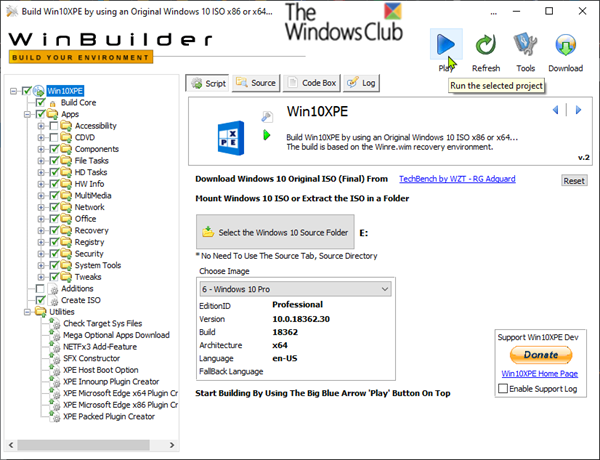
The Win10XPE build process will turn your custom Windows PE environment into an ISO file.
If your installed antivirus program is blocking WinBuilder to run the build process, you can create an exception in the AV program.
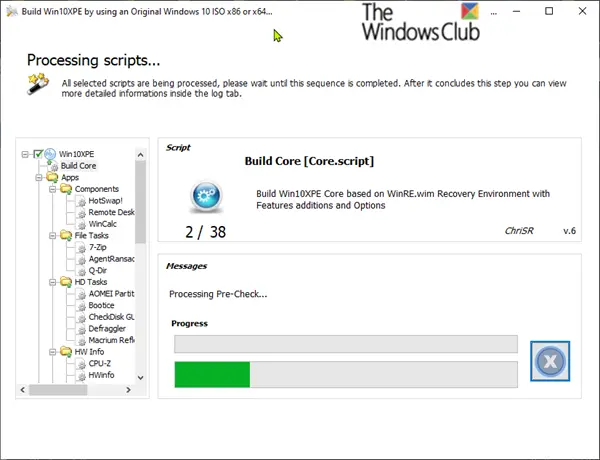
So, once the build process is complete, you can create a bootable USB with the ISO.
How do I create a custom WinPE?
To create a custom WinPE, you need two things – Win10PE project file and the ISO. It is possible to create such a disc using the Win10XPE building, which is a free application that you can download and use on your Windows 11/10 PC. A detailed guide is mentioned here, and it is recommended to follow all the steps to get the job done.
Read: AOMEI PE Builder lets you create a complete WinPE-based bootable media.
What is Windows PE disc?
A Windows PE disc is such a disc that you can use when you get into trouble with your Windows PC. It is possible to recover your system using a WinPE disc. Not only that, but also you can restore and analyze your corrupt system using the same disc. However, you need to create one disc when your system is up and fully running without any problem.
That’s it folks! You can now use the media to begin recovering your Windows 11/10 installation.
Read: How to create a Rescue Disk on USB Flash Drive for your computer.
Leave a Reply